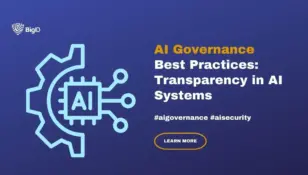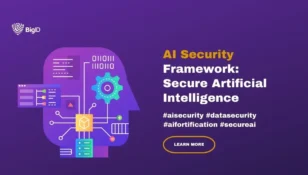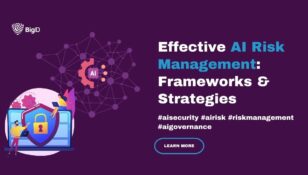AI TRiSM: Artificial Intelligence Trust, Risk & Security
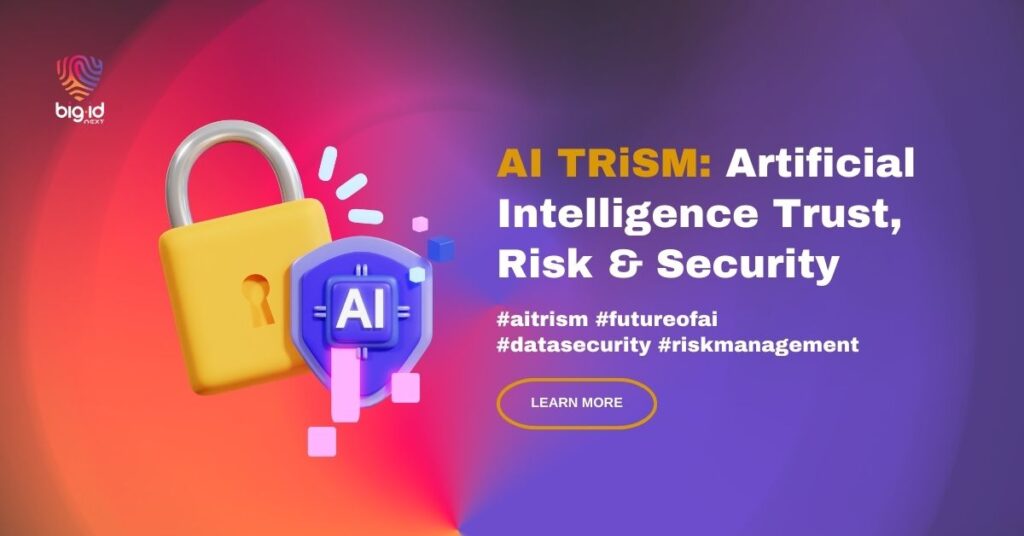
The AI TRiSM Framework: Artificial Intelligence Trust, Risk, and Security Management for AI Models
We’ve spoken quite a bit about how AI governance is necessary due to the well-documented risks that could affect artificial intelligence systems, including data security and privacy.
AI TRiSM is the latest framework that focuses on mitigating some of the more egregious problems faced by businesses that develop and use AI models. Let’s take a look at what it is and how it helps.
Artificial Intelligence Trust, Risk, and Security Management: What Is the AI TRiSM Framework?
AI TRiSM, or AI Trust, Risk, and Security Management, is defined by Gartner as a framework that supports “model governance, trustworthiness, fairness, reliability, robustness, efficacy, and data protection.”
It’s a fast-growing technology trend that helps you detect and mitigate the risks that your AI model might face.
Of course, it might be useful to quickly recap the problems AI models potentially face if they aren’t governed properly.
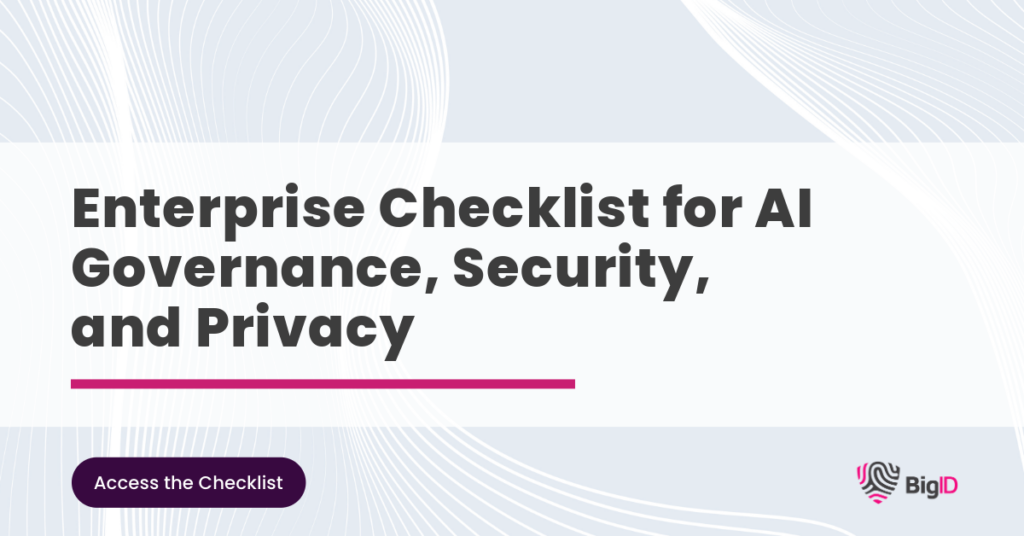
AI Risks and How They Affect Your Business
Explainability
A very important part of AI development is knowing how a model processes data, especially for high-stakes applications. You should be able to explain how it makes decisions, what data it uses, and why it needs that information.
The reason why this is important is because it keeps the system accountable, allowing users and stakeholders to trust it. If you know why and how it reaches a conclusion, you can rely on its outputs. If the processing is happening inside a “black box”, you can’t be sure if it’s accurate or unbiased.
A lack of explainability is a risk in AI models because it makes them more difficult to debug. It’s also a legal and regulatory liability, and if users can’t trust it, they are less likely to adopt it.
Model Security
Much like software and databases, an AI tool is susceptible to misuse by external threat actors. Using techniques like prompt injections, model poisoning, adversarial attacks, model extraction, and more, these people can lead an AI model to give bad outputs.
A chatbot giving poor replies is an inconvenience, but it can affect your reputation. However, a mission-critical application making wrong decisions can be harmful to users. Again, this can become a trust issue with users, but it’s also a security concern.
Data Privacy Risks
All AI models are trained on data, and some of it can be sensitive or personal information. For example, if you trained your AI model on customer information from your CRM, some of it is personally identifiable information that’s protected under data privacy laws.
As per these regulations, you must inform the consumer whose information you’re storing why you’re doing so and what it’ll be used for. As such, they must be informed if their information is being used to train AI models. They must also be told how and why it’s being used in the training, and how long it’ll be retained.
This ties in with the explainability requirement, because you have to know the hows and whys of the data requirements to get informed consent from customers.
The other requirement of these regulations is that this sensitive information must be protected, so that only those who are authorized can view it. Without proper safeguards, a generative AI model or a chatbot could be compelled to expose sensitive customer information with the right (or, wrong, depending on how you look at it) prompts.
Even without taking privacy laws into account, if customers find out your model is revealing their PII to unauthorized people, they’d stop trusting you, which affects your reputation. With the privacy laws, however, you could face legal consequences.
Regulation Compliance
Data privacy requirements aren’t exactly a risk, but you are obligated to follow them. That means knowing which ones apply to you. Let’s say you’ve got customers from all over the world. Certain regulations, like the GDPR in the European Union (EU), apply to anyone who was in the region when their data was collected. Others, like the CCPA, protect only those who are residents of California.
Some laws require opt-in consent, where you need explicit permission to collect data, whereas others follow an opt-out model, putting the onus on the customers.
These regulations require you to have a good reason for collecting information and impose limitations on the sale of said data. You also need a plan for disposing of the information once its purpose is complete.
You must also demonstrate that you’ve got adequate security measures to protect the information and have documentation to show consent.
Not complying with these laws can, as we said earlier, lead to penalties and legal repercussions.
The Pillars of AI TRiSM
Since Gartner coined the term and defined it, let’s see what the company says are the four main principles of the AI TRiSM framework:
Explainability and AI Model Monitoring
As we learned earlier, explainability is essential for AI models. AI TRiSM emphasizes transparency in how information is processed and decisions are made, as it’s very important for building trust with users.
Model monitoring is an important part of explainability. It’s the process of observing model behavior over time to ensure that no bias or anomalies creep in. It’s only natural that the data used to train a model becomes outdated after some time. Monitoring outputs ensures that this data decay is caught before it starts affecting performance significantly.
ModelOps
Model operations, or ModelOps, is the process of managing an AI model’s lifecycle. It encompasses all the processes and systems for:
- Model deployment
- Model monitoring
- Model maintenance
- Model governance
AI Application Security
Like all technologies, AI is at risk of cyber attacks. However, the types of attacks it’s susceptible to and the potential risks associated with AI adoption are different from other types of software and applications. AI application security, or AI AppSec, is designed to promote security across all components of the model. It covers hardware, software libraries, and tooling for effective risk management.
Privacy
As we’ve already established, data privacy is more than just an ethical requirement; it’s also a legal requirement. This aspect of the AI TRiSM framework helps you develop the policies and procedures to collect, store, process, and finally dispose of users’ data safely and in line with privacy regulations.
Benefits of Implementing AI TRiSM Principles
The overarching benefits provided by AI TRiSM are right there in its name: Trust, Risk, and Security. Let’s take a look at them in a bit more detail:
Improved AI Trust
AI TRiSM helps improve your AI model’s performance, outputs, and reliability. It’s also more transparent in how it works and processes information. Most importantly, it focuses on keeping any sensitive personal information used by your AI model safe. As a result, your users can trust it on all levels.
Reduced Risk
With its focus on AI AppSec, model monitoring, and privacy, AI TRiSM helps mitigate security and regulatory risks. It helps you watch out for system failures and security breaches. Additionally, it proactively informs you of vulnerabilities in your system and processes.
Enhanced Regulatory Compliance
Implementing the AI TRiSM framework helps you achieve regulatory compliance more easily. By defining a strategy for keeping consumer data safe from unauthorized access, the framework helps you maintain privacy and avoid penalties.
All in all, by helping your AI system become more transparent, secure, and compliant, AI TRiSM builds trust with your users and stakeholders, secures your model and data, and keeps you on the right side of regulations.
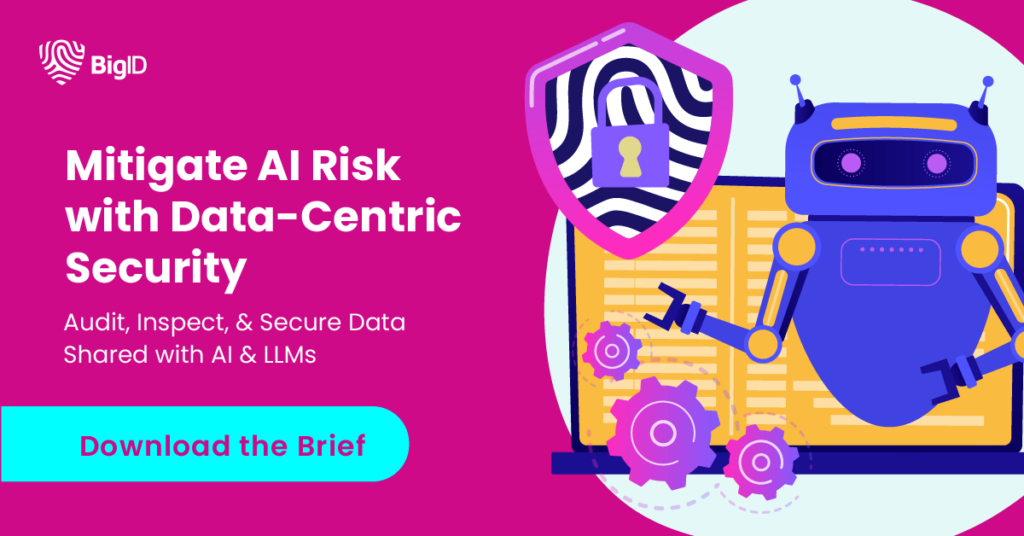
Trust, Risk, and Security Management With BigID
As organizations begin to embrace AI TriSM technologies and methodologies, they need flexible solutions tailored to their individual needs. BigID is the industry-leading platform for data privacy, security, compliance, and AI data management that utilizes advanced machine learning and deep data discovery.
With BigID you can:
- Discover Data: FInd and catalog your sensitive data, including structured, semi-structured, and unstructured – in on-prem environments and across the cloud.
- Gain Complete Visibility: Automatically classify, categorize, tag, and label sensitive data. Build a cohesive data inventory that’s accurate, granular, and scales easily to prepare for regulatory audits.
- Mitigate Data Access Risk: Proactively monitor, detect, and respond to unauthorized internal exposure, use, and suspicious activity around sensitive data.
- Achieve Compliance: Meet security, privacy, and AI compliance globally, wherever data resides.
Book a 1:1 demo with our data and AI experts to see how BigID can help accelerate your organization’s initiative today.



